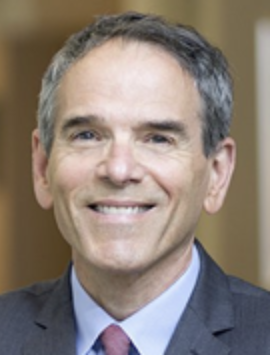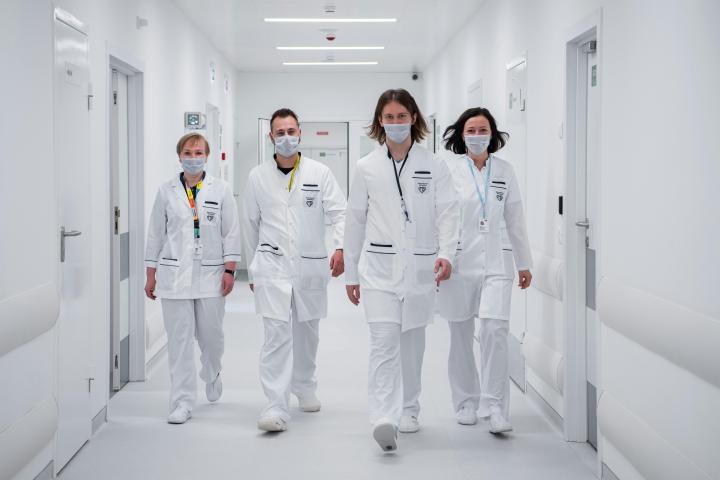
Healthcare Insights: "Do No Harm"
By John August
Many years ago, a Registered Nurse (RN) who worked a long time in a hospital Intensive Care Unit (ICU), told me of an experience she had: “I received a patient from the Emergency Room who was in a coma, kept alive on a respirator. I learned from reading the physicians and nurses notes from the ER, that the woman who was in her early 30s was diagnosed with advanced ovarian cancer which had metastasized to her brain, and throughout her body. She also learned from those notes that the woman had no health insurance and had never seen a doctor...ever.”
The RN shared with me how this case, while extreme was not so unusual: she saw many cases in her ICU where patients had advanced injury or illness that could have been prevented by early detection or early treatment. In almost all cases the theme of these cases was the same: the patient had no access to healthcare or inability to afford healthcare which led to preventable serious illness, injury, and death.
In telling the story to me, the RN also expressed a deep sense of personal devastation, helplessness, and the inability to live up to the oath she took when she passed her board examinations to be certified as an RN which is noted in an article entitled “Safety” published by the Centers for Medicare and Medication Services (CMS). The CMS is the largest health insurance program in the United States.
“Ensuring patient safety is at the heart of the Hippocratic Oath: First, Do No Harm. As the nation’s largest payer for health care, the Centers for Medicare & Medicaid Services’ (CMS) mission in our National Quality Strategy includes ensuring everyone is safe when they receive care. Protecting patients must always remain our first priority.”
All physicians take the Hippocratic Oath to do no harm, and nurses recite the Nightingale Pledge which commits the practitioner to the same promise.
Inability to Do No Harm adds to the stressors that have plagued healthcare workers for far too long. High levels of burnout among physicians, nurses, and dentists are high, growing, and tragic. We have huge shortages in these professions which adds to the vulnerability all people in our communities face who have longer and longer wait times to see medical professionals.
In this present moment, there are at least two (2) major initiatives coming from the new administration that will create barriers to the ethical and moral code of Do No Harm: potential cuts to Medicaid and new and aggressive forms of immigration enforcement.
I want to focus attention in this month’s Healthcare Insights on some of the implications of aggressive immigration enforcement at healthcare facilities.
First, a quick note on possible Medicaid cuts and how practitioners and health systems will be strained to continue high levels of quality care. Such constraints will do harm! 79,308,002 people were enrolled in Medicaid and the Children’s Health Insurance Program (CHIP) in the 50 states and the District of Columbia that reported enrollment data for October 2024.
THE MATH IS CONCLUSIVE
In an article by Alice Burns in the publication KFF, she notes that:
“The House passed a budget resolution instructing the House Energy & Commerce Committee (E&C) to reduce the federal deficit by at least $880 billion over 10 years. Although the budget resolution does not mention Medicaid, it was widely expected that most of those cuts would come from Medicaid given E&C’s area of jurisdiction. On March 5, the Congressional Budget Office (CBO) published a letter detailing the non-Medicare mandatory spending under E&C’s jurisdiction to identify what programs could be cut to meet the $880 billion target. (Medicare was excluded because cuts to Medicare are believed to be off-the-table.)
The CBO letter confirms early expectations, finding that over the next 10 years, 93% of non-Medicare spending in the E&C jurisdiction is from the federal share of Medicaid spending: $8.2 trillion out of a total $8.9 trillion. An additional $200 billion of federal spending comes from the Children’s Health Insurance Program (CHIP). Some of the committee’s remaining spending is budget-neutral, and therefore, won’t count towards deficit reduction. Even if E&C eliminated all non-Medicaid and CHIP spending, the committee would need to cut federal spending on Medicaid and CHIP by well over $700 billion, nearly 10% of projected spending; and most agree that E&C is unlikely to eliminate all other sources of non-mandatory spending.
The math is conclusive: Major cuts to Medicaid are the only way to meet the House’s budget resolution requirements. There are a myriad of options available for cutting Medicaid, but all of them would leave the states facing difficult choices to raise revenues or cut spending. Cuts to Medicaid spending could mean dropping coverage for some people, eliminating coverage of high-cost optional benefits such as prescription drugs, or cutting payment rates to health plans and providers. Different policies would have different implications for states, with policies such as a per capita cap having widespread effects across all states and policies such as cuts to the federal share of funding for the Affordable Care Act (ACA) expansion disproportionately affecting the red and blue states that have expanded Medicaid. Other policies, such as limiting supplemental payments to hospitals, could have disproportionate effects on the healthcare industry, with the consequences being larger in states with greater reliance on such payments.”
What will new enforcement mechanisms mean for practitioners’ and health systems’ ability to prevent harm to immigrant patients?
In, “5 Key Facts About Immigrants and Medicaid”, also in KFF, Samantha Artiga, Drishti Pillai, Jennifer Tolbert, and Akash Pillai, the authors argue that:
“Many families face barriers to enrolling eligible lawfully present immigrants and citizen children in assistance programs due to fear, confusion about eligibility policies, difficulty navigating the enrollment process, and language access challenges. Restrictive immigration policies, including increases in enforcement actions, being implemented by the Trump administration will likely increase fears of enrolling in coverage and accessing health care. Even prior to the Trump administration, in 2023, nearly one in ten (8%) immigrants said they avoided applying for food, housing, or health care assistance in the past year because they didn’t want to draw attention to their immigration status or the status of someone in their family.”
According to the March 9, 2025 edition of New York Times, an estimated 20 percent (emphasis added) of the U.S. labor force is foreign born, and millions of immigrant workers lack legal immigration status.
These workers are members of our communities who work, build families, and are essential to the economic life of the nation. They, like all of us, need healthcare, and there are new and emerging policies that will likely prevent many of them from being able to receive care.
HARM!
I had the great pleasure to speak with David Leopold, an immigration attorney based in Cleveland, OH.

Mr. Leopold is the past President and past general counsel of the Washington, D.C. based American Immigration Lawyers Association (AILA), the premier bar association of immigration lawyers and professors in the U.S. A nationally recognized immigration reform advocate, writer, and public speaker, Mr. Leopold has testified as an immigration law expert before the U.S. Congress and frequently writes for The New York Times, The Washington Post, The Los Angeles Times, Politico, Mother Jones, and CNN.
He shared with me that we are seeing enforcement methods NEVER USED BEFORE, including the entrance into what have historically been designated “sensitive locations” which include hospitals and social service organizations. In practice, this means that healthcare administrators and professionals must determine if they must comply with this unprecedented enforcement threat. Such a choice directly impacts the healthcare oath to DO NO HARM!
Mr. Leopold developed the following guidance, which is included in a presentation for healthcare organizations and healthcare workers, in the event they face new immigration enforcement operations by the government:
Some of the highlights of the presentation include:
1) Unprecedented entrance into “sensitive locations” will result in:
- Decline in patient trust and public health risks if patients avoid treatment
- Operational disruptions as health care facilities navigate the legal complexities while maintaining patient confidentiality and health care standards
- Health care facilities will need to establish new protocols, and staff will require training on how to handle interactions with ICE and how read and comply with warrants
2) Much of the guidance to health systems and healthcare workers is grounded in the Constitutional protections against unlawful search and seizure.
3) Guidance on how to prepare:
- What type of legal document does the ICE agent have?
- Administrative warrant signed ICE official, not a judge
- Compliance not required
- Judicial warrant signed by a judge or magistrate
- Arrest warrant identifying hospital/facility as location
- Compliance required
- Arrest warrant with no information identifying hospital/facility
- Compliance not required
4) Warrants and Consent
- Beware of what is in “Public View”
- Avoid collecting immigration status information
- Provide educational materials
- Be ready to consult with a lawyer
- Designate an authorized staff person
- Don’t consent, document
- Review the warrant carefully
When we consider the threat and the preparation necessary to protect patients, healthcare workers and health systems from harm, we must recognize the fear, anxiety, and sense of loneliness that can impact all who are present to provide care to members of the community under these threats. Indeed, it requires individual courage and institutional support for there to be a collective ability to Do No Harm.
Fortunately, health system leaders are taking collective action and providing clear guidance and support to health care workers in this recent example from the nation’s largest public health system:
OPEN LETTER TO IMMIGRANT NEW YORKERS
In New York City you have a right to healthcare, regardless of your immigration status or ability to pay. Health care is so important and we want you to get the care you need before you get sick or have an emergency. You should not be afraid to go to the doctor, the community health center, or the hospital. Our doctors, nurses, and other health care workers care about you. Many are immigrants themselves who come from the communities they serve and speak your language. We are all here for you.
NYC Health + Hospitals runs the City’s 11 public hospitals, five nursing homes, and neighborhood Gotham Health Centers in every borough. The NYC Health Department operates the City’s sexual health, immunization, and tuberculosis clinics and Neighborhood Health Action Centers. Our health centers and hospitals have a long and proud history of caring for everyone. No exceptions.
We respect your privacy. When you visit our health care facilities, you are not required to share information about your immigration status to receive care. We only release patient information with your consent or if authorized or required to do so by law.
Here are a few things you should know about seeking care in New York City:
- Regardless of immigration status or income, all children, people who are pregnant, and adults ages 65 and older can get health insurance. Our staff is available to help you sign up, including helping you understand what personal information you need to complete the paperwork. To learn more, visit: nychealthandhospitals.org/paying-for-your-health-care.
- If you cannot receive or afford health insurance, you may be eligible for NYC Care, the City’s low- or no-cost health care access program. Visit nyccare.nyc to learn more.
- NYC Health + Hospitals partners with IDNYC, the New York City government identification card available to everyone. IDNYC is an accepted form of identification for patients that can be used during NYC Health + Hospitals registration and check-in. IDNYC can also be used to get prescription drug discounts and access your vaccine records. Go to nyc.gov/idnyc to learn more.
- In addition, other City services are available to you, including food, education, legal services, public safety, and more. We encourage immigrant New Yorkers to seek out important New York City government resources and information that are available to them and their families. Visit nyc.gov/immigrants to access the Mayor’s Office of Immigrant Affairs’ immigrant resource guide.
Where You Can Get Care
NYC Health + Hospitals public hospitals and health centers are located in neighborhoods all over New York City and can provide services in your language. Go to healthandhospitals.org/locations to find a location near you. At all our locations, you can access free interpretation services in over 200 languages, 24/7. We also offer translated materials in the top 13 languages most commonly spoken by our patients to ensure we can answer any questions you have.
NYC Health Department sexual health, immunization, and tuberculosis clinics are found in the Bronx, Brooklyn, Manhattan, and Queens, and the Neighborhood Health Action Centers are located in the Bronx, Brooklyn, and Manhattan. Go to nyc.gov/health to find our locations. Our clinics host a variety of services, programs, and activities in multiple languages.
Call 311 for a list of all public hospitals and health centers, to find out more information about resources such as NYC Care and IDNYC, or to send a message to NYC Health + Hospitals, the NYC Health Department, or the NYC Mayor’s Office of Immigrant Affairs.
It is our mission to empower every New Yorker — without exception — to live their healthiest life possible.
Mitchell Katz, MD
President and CEO
NYC Health + Hospitals
Michelle Morse, MD, MPH
Acting Health Commissioner
NYC Department of Health and Mental Hygiene
Manuel Castro, MPA
Commissioner
NYC Mayor’s Office of Immigrant Affairs"
COURAGE AND COMMITMENT
It is understandable that we don’t appreciate how much courage and commitment is asked of our healthcare workers and the systems they work in. When we seek care, we are concerned about our own wellbeing. We don’t often think about what it requires to be a healthcare worker.
From the individual experience of feeling helpless in the face of not being able to ease pain and suffering due to the many who lack access to preventative care, to the fear of budget cuts to already underfunded health services that will further limit access to care, to the fear of reprisals from government authorities if there is noncompliance with new aggressive forms of immigration enforcement, and much more, the ability to DO NO HARM is becoming a greater and greater challenge for healthcare workers each day.
And all of this coming on the heels of the COVID-19 pandemic, along with the corporatization and consolidation of the industry which has altered and interfered with the sanctity of the patient-practitioner relationship, it is as plain as day to understand why healthcare workers are suffering moral injury on a larger and larger scale.
We must find ways to support them.
The statement from New York’s Public Health System included above makes the clear case for all of us:
“In New York City you have a right to health care, regardless of your immigration status or ability to pay. Health care is so important and we want you to get the care you need before you get sick or have an emergency. You should not be afraid to go to the doctor, the community health center, or the hospital. Our doctors, nurses, and other health care workers care about you. Many are immigrants themselves who come from the communities they serve and speak your language. We are all here for you.”
We must be there for the health care workers…so they and all of us can Do No HARM!
John August is the Scheinman Institute’s Director of Healthcare and Partner Programs. His expertise in healthcare and labor relations spans 40 years. John previously served as the Executive Director of the Coalition of Kaiser Permanente Unions from April 2006 until July 2013. With revenues of 88 billion dollars and over 300,000 employees, Kaiser is one of the largest healthcare plans in the US. While serving as Executive Director of the Coalition, John was the co-chair of the Labor-Management Partnership at Kaiser Permanente, the largest, most complex, and most successful labor-management partnership in U.S. history. He also led the Coalition as chief negotiator in three successful rounds of National Bargaining in 2008, 2010, and 2012 on behalf of 100,000 members of the Coalition.



